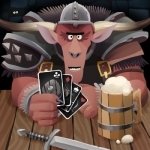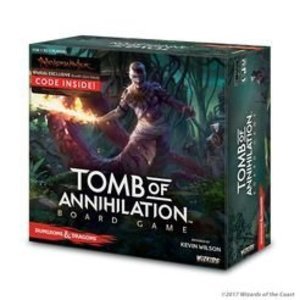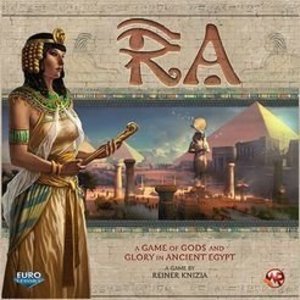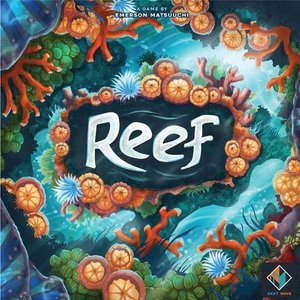Purple Phoenix Games (2266 KP) rated YOHO (You Only Hang Once) in Tabletop Games
Jan 14, 2021
As mentioned previously, YOHO is a semi-cooperative game of pirate players attempting to find the Treasure and bury it in their safe spaces by the end of the game. Players will be assuming roles of jobs on a pirate ship: Captain, Quartermaster, Bosun, Seadog, and Pariah. These positions have jobs and pirating to do or else they may find themselves walking the plank.
DISCLAIMER: We were provided a copy of this game for the purposes of this review. This is a retail copy of the game, so what you see in these photos is exactly what would be received in your box. I do not intend to cover every single rule included in the rulebook, but will describe the overall game flow and major rule set so that our readers may get a sense of how the game plays. For more in depth rules, you may purchase a copy online or from your FLGS. -T
To setup players will choose their pirate persona and place it in front of them with the Loyal side showing. On the backside is the Rebel side, which will allow the player special abilities later in the game. A Captain is chosen and that player then doles out the remaining ranks of pirate jobs to the other players. Each player will be dealt five cards from the shuffled Blame deck (draw deck) for their starting hands. The top card from the deck is flipped to become the Blame Pile (discards). The Captain takes the Course card and places it Port side up. The game may now begin!
The active player’s turn will be comprised of four steps. The first step is refilling the hand to five cards. Should the player have more than five then no additional cards are drawn. Next the player will choose one card from hand to play to the Blame Pile. The card may not contain the same text as the card below it, so no stacking UNO Draw 2s. Once the card is played to the Blame Pile the active player will carry out the card’s instructions. These could be switching hands with other players, flipping their pirate cards to Rebel or vice versa to Loyal, Demoting pirate ranks, or one of the other four actions printed on the cards. Finally the active player passes the Course card to the next player to take their turn.
While this all seems typical of many card games, YOHO forks from the common by employing a Blame mechanic. One of the aforementioned other actions on cards is the Accuse action. When one player accuses another the Blame Pile is consulted, and whichever pirate’s rank number matches the highest sum of the matching rank number of cards in the Blame will take the entirety of the Blame Pile into their hand. For example, if the Bosun (3) accuses the Seadog (2) then the Blame Pile is sifted through in order to see how many cards match the 2 and 3 of the ranks involved. Add up the totals of these cards to arrive at the rank’s Blame. The larger number receives the Blame. Special rules are provided for when the Captain is both involved in an accusation and also when the Captain is forced to take the Blame.
The game ends once a pirate draws the last card from the Blame (draw) deck. Players will total their matching Blame in their hands, adjust this number if the player holds the Treasure card or if the pirate is Loyal vs. Rebel according to the Course card’s current display. The player with the most Blame will walk the plank and lose immediately. With a few other scoring rules the player still on board with the highest rank wins!
Components. This game is a deck of cards in a tuckbox. The cards are all fine quality with linen finish (the best finish methinks). The art is somewhat cartoony, but still enjoyable and not offensive at all. I don’t have any problems with the components in YOHO.
My first game of YOHO was played between my wife and I and it was a disaster. I strongly suggest playing with three or four, with four giving the best experience. When the full compliment is used there is only one “inactive” pirate who sits in the middle of the table holding onto their rank and not really doing anything. A ghost player, if you will. However, with two players there are three ghost players not doing anything. It just didn’t work with us AT ALL. But four players was quite enjoyable and actually saved this one for me.
I like the gameplay here. It is different and quirky, and I like that. The constantly-shifting ranks and demotions left and right makes players wish for promotions, but those only come as demotions to a higher rank. Also being able to accuse other players caters to the card counters in the group because they can be watching which cards are played to the Blame Pile and know exactly which rank has more cards represented. While that is dependent on the type of players involved, I have not found that to be a problem. I also really like the shifting Course card. When on Port all pirates can do their jobs, but as soon as it flips to Starboard the Rebel pirates may NOT complete their jobs. This is such an interesting way to utilize the active player token instead of just noting which player’s turn it is currently.
Again, I do NOT recommend playing with two, but definitely do recommend with four. I would be hesitant at three, but it can certainly work. Purple Phoenix Games gives this one a wishy-washy-swashbuckling 8 / 12. If your collection is missing another pirate card game that can be played quickly, has interesting twists, and fresh-feeling mechanics, give YOHO a try. You might finally have the chance to send your rival off the plank. But be warned, despite the title, there is no hanging in YOHO (You Only Hang Once).

Re-Volt Classic
Games
App
Classic online multiplayer racing action! Race radio-controlled cars through the neighborhood and...
Purple Phoenix Games (2266 KP) rated Cooking Customers in Tabletop Games
Feb 4, 2020
DISCLAIMER: We were provided a copy of this game for the purposes of this review. This is a retail copy of the game, so what you see in these photos is exactly what would be received in your box. I do not intend to cover every single rule included in the rulebook, but will describe the overall game flow and major rule set so that our readers may get a sense of how the game plays. For more in depth rules, you may purchase a copy online or from your FLGS. -T
Cooking Customers is a card and dice game where the first player to amass $20 in “tips” will be crowned the winner. Players earn tips by serving enough meals to customers at each table. Players can receive meals by rolling them on dice, or by card manipulation. Let me explain.
To setup, place the meals (black discs) in the middle of the table for all to reach. Similarly, place all the dice nearby. These dice have three sides: FIRED, MEAL, and a blank side. Shuffle the mighty deck of cards and deal five to each player, placing the rest of the deck in the middle of the table. Finally, shuffle the Table cards and place somewhere near the other components. Players are now ready to begin!
On a player’s turn, they will first draw the topmost Table card to be placed in front of themselves. This card will show how many meals need to be served to it to be satisfied and earn tips. The Table cards will mostly just sit there in front of players collecting meal discs for the game’s duration. Once a Table card is drawn (and only one Table per player, please) the active player may then play cards from hand. A player may play one or two cards, but only one card may be played to the active player’s tableau, and only one card may be played on an opponent. Should a player not wish to play a card to anyone’s tableau, they must discard a card to the middle of the table. Then the active player will draw back to the hand size of five cards.
Cards played to other players are usually bad, Munchkin-esque cards that halt progression or just cause mayhem for their designs. I will not go into detail on these, as half the fun of this game is the Take-That of these cards. Cards played to a player’s own tableau can be a myriad choices: Cooks, Helpers, Kitchen Supplies, etc. The most important are the Cook cards. A player will need to have a Cook “hired” in front of them in order to participate in the next phase of the game: rolling dice. Players can have Helper cards (sous chefs) and Kitchen Supplies active without a Cook, but the player may not roll dice or serve meals without a Cook. Cooks and Helpers will dictate how many dice are rolled in the next phase of a turn, and rolling more dice is always better.
Once all cards have been played on a player’s turn, they may now roll the dice (though for a game with such a dark theme I say we use the “Roll Them Bones” colloquialism). When the dice are rolled, players are hoping for MEAL to show up on all dice. This is how a meal can be collected and served to the Table cards. However, if at any time all dice read FIRED then the player’s Cook is fired and they may not continue rolling dice. The Cook is discarded and play is forfeited to the next player. #cheflife amirite?
Once a Table card has all the meals it needs to be satisfied, the player may score it by flipping it over to reveal the amount in tips they have earned. Play continues in this fashion until one player has earned $20 in tips. They can then taunt the other players with their superiority.
Components. Cooking Customers is a BUNCH of cards, some painted wooden discs, and some embossed dice. The cards are good quality, the discs are good as well, and the dice are great. All the components are pretty darn good. The art, though gross at times, is really well-done (see what I did there) and kept us laughing throughout our plays.
I do have one qualm about this game: the rulebook. Though only six pages long and with lots of illustrations throughout, I found that reading it made me more confused than it should have. I did take the rulebook’s advice to go to the publisher’s website, goodenoughgames.com, and watch the rules explanation and playthrough. That helped immensely to clear up what the rulebook did to my brain.
All in all, we had a great time playing this one. We all like Munchkin, and though it is NOT Munchkin, Cooking Customers delivers a take-that dice and card game that really is worth checking out. If you are looking for something with a new theme that plays quickly and has some meat on its bones (and there), then we certainly recommend Cooking Customers. Purple Phoenix Games gives this one a hearty (food puns are too easy) 13 / 18. You can purchase a copy at goodenoughgames.com currently. While you’re there please watch the video.

Soccer Ragdoll 2 Player Physics games
Games and Entertainment
App
***~~~Kick, Jump, and Goal~~~*** ~Soccer Ragdoll Fun! Multiplayer one touch Soccer Jump game! For...
Beth Orton recommended Blue by Joni Mitchell in Music (curated)

Card Crawl
Games and Entertainment
App
Card Crawl is a solitaire style Dungeon Crawler played with a modified deck of standard cards. ***...

Dungeons & Dragons: Tomb of Annihilation Board Game
Tabletop Game
The death curse grows and the souls of the world are in peril! Are you ready for adventure? In...
Purple Phoenix Games (2266 KP) rated Reef in Tabletop Games
Aug 1, 2019
Reef is an abstract hand management, pattern building game that challenges the players to become coral reef architects and rebuild our fragile underwater ecosystem. This is a lofty goal, as our coral reefs in the real world are hurting for rejuvenation something fierce.
DISCLAIMER: I do not intend to cover every single rule included in the rule book, but will describe the overall game flow and major rule set so that our readers may get a sense of how the game plays. For more in depth rules, you may purchase a copy from the publisher directly or from your FLGS. -T
Setup is easy: shuffle the player mats and deal one to each player. The player that received the one board containing the starfish will be the starting player. Deal the players one of each colored coral piece, two cards from the deck, and 3 VP tokens. Place your reef chunks in the middle of your board in any order and you are ready to play!
On your turn you can do one of two things: draw a card or play a card. There are three cards face up to form the offer row, or a player can pay a VP token to the card with the lowest printed VP total to take the face up card on top of the draw pile (a la Small World). When you play a card, you immediately take the coral pieces on the card and place them on your play mat. The pieces can be stacked on other pieces of the same or different color, or on a blank spot on the mat. Once done, you check the card you played for any scoring conditions you may have met from your play mat. I will not go into detail about scoring, but there are several types of scoring that are employed in a game of Reef. The game continues in this manner until all of one color of coral pieces are used up. Players finish the round and then count their VP tokens. The winner is the player with the most VPs.
Components. The box is, what, normal sized? And the art on it is wonderful. So colorful and instantly recognizable. In fact, the art on the game in its entirety is truly amazing. I love it! The cards are of fine quality, but since they are handled a bit I sleeved mine. The VP tokens are of good quality, and I like that the pieces aren’t just perfect circles. It’s not a huge deal, but it helps with immersion just that much more. Same for the player mats. They could have been just as effective with square mats, but just that bit of wave makes it more enjoyable to play on for me. The big chunky coral pieces are so fun to play with, and handle, and, honestly, drop. They are very satisfying and great for those with colorblindness since they are all different shapes for the different colors they represent. All in all, Next Move Games knocks it out of the park on components AGAIN!
As you can tell by our score, we really like this game a lot. The first time I played it, my father-in-law used an interesting strategy and won the game. The next time I played it, I tried to use that same strategy and came in 3rd place. So, I chalked that win up to luck of the (card) draw and am now seeking more varied strategies to become the King of Reef. This is perhaps what also keeps the game from being a Golden Feather Award winner – I can play my game strategy and you can play yours, but that’s it. There is no real player interaction. As one Duke of Dice Alex would sing it, Reef is actually just “multiplayer solitaire.” While that is completely appropriate and non-offensive, I believe that with some more player interaction I would be more apt to bump this one to a 6. That said, we at Purple Phoenix Games give Reef a well-deserved bubbly score of 15 / 18. Emerson has himself another hit and I am proud to have it in my collection. You should grab it too, maybe.





